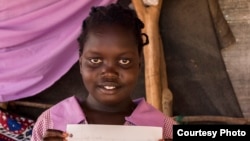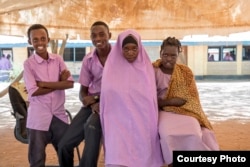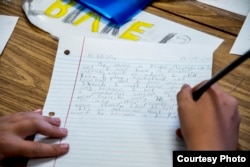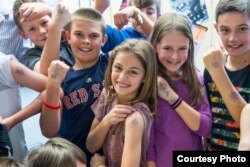Fifth grade students at High Peaks Elementary School in Boulder, Colorado began exchanging letters several months ago with students at a primary school in Kenya’s Dadaab refugee camp. They are participating in a pen pal program facilitated by the U.S.-based humanitarian group CARE.
The students have also exchanged drawings and even challenged each other to a dance-off, sending each other recorded videos.
“You know, honestly, I tend to think that of all the math and science and language arts and everything we have done, this is probably the project that will stick with them longer than any other, and hopefully for life,” said Zachary Fink, fifth grade teacher at High Peaks.
Dadaab Primary School teacher Victor Ochien’g Odera says that the letter writing project is providing a valuable cross-cultural exchange.
"Most of the letters are telling that, we want to see you in the future, what do you want us to do for you, how can you help us in learning English, and can you help us in learning about different cultures? And others are saying that they want to learn Swahili and ours are saying, yes, come, we will teach you how to do it,” said Odera.
CARE started Letters of Hope last year. It has also helped middle school students in New York correspond with Afghan refugees in Greece and displaced families in Yemen, and elementary school students in Atlanta to exchange letters with South Sudanese refugees in Uganda.
“Now too with the numbers of refugees and displaced people just continuing to go up every year, there also seems to be a sense of fear around the world and what we wanted to do with this project, this Letters of Hope project, is really connect people around the world, and show the common humanity that exists, and we think, what better way to do that than to connect children,” said CARE emergency communications manager Holly Frew.
A sentiment with which Fink agrees.
"I hope the kids learned that regardless of what the situation is, that you can do something, that you can have a voice,” he said.
According to U.N. data as of May 2017, the total number of registered refugees and asylum seekers in Kenya is almost half-a-million people, with more than 246,000 of them living in Dadaab.












